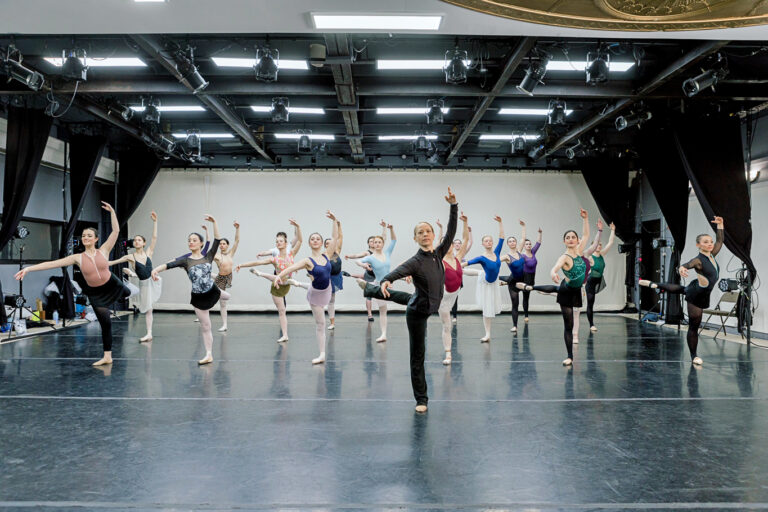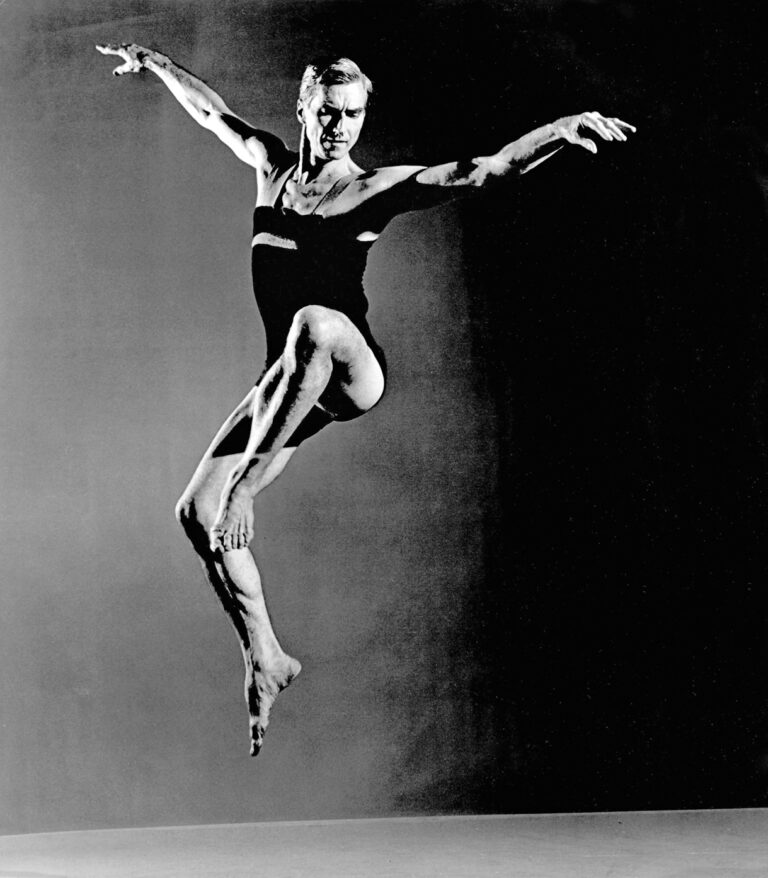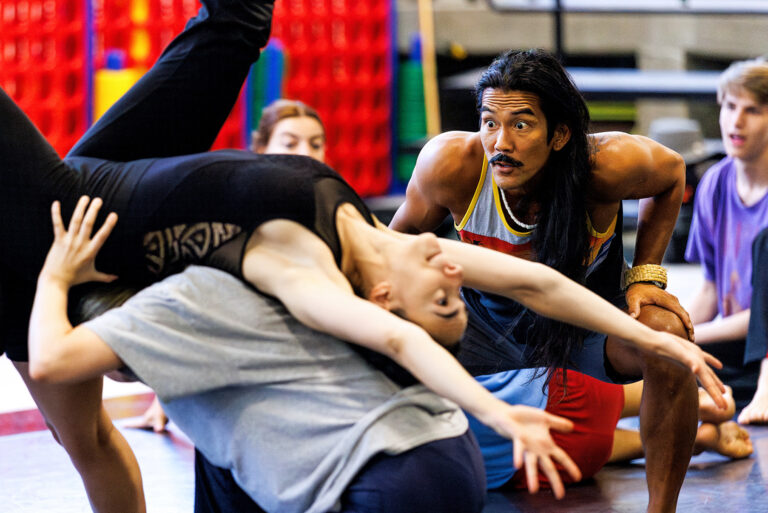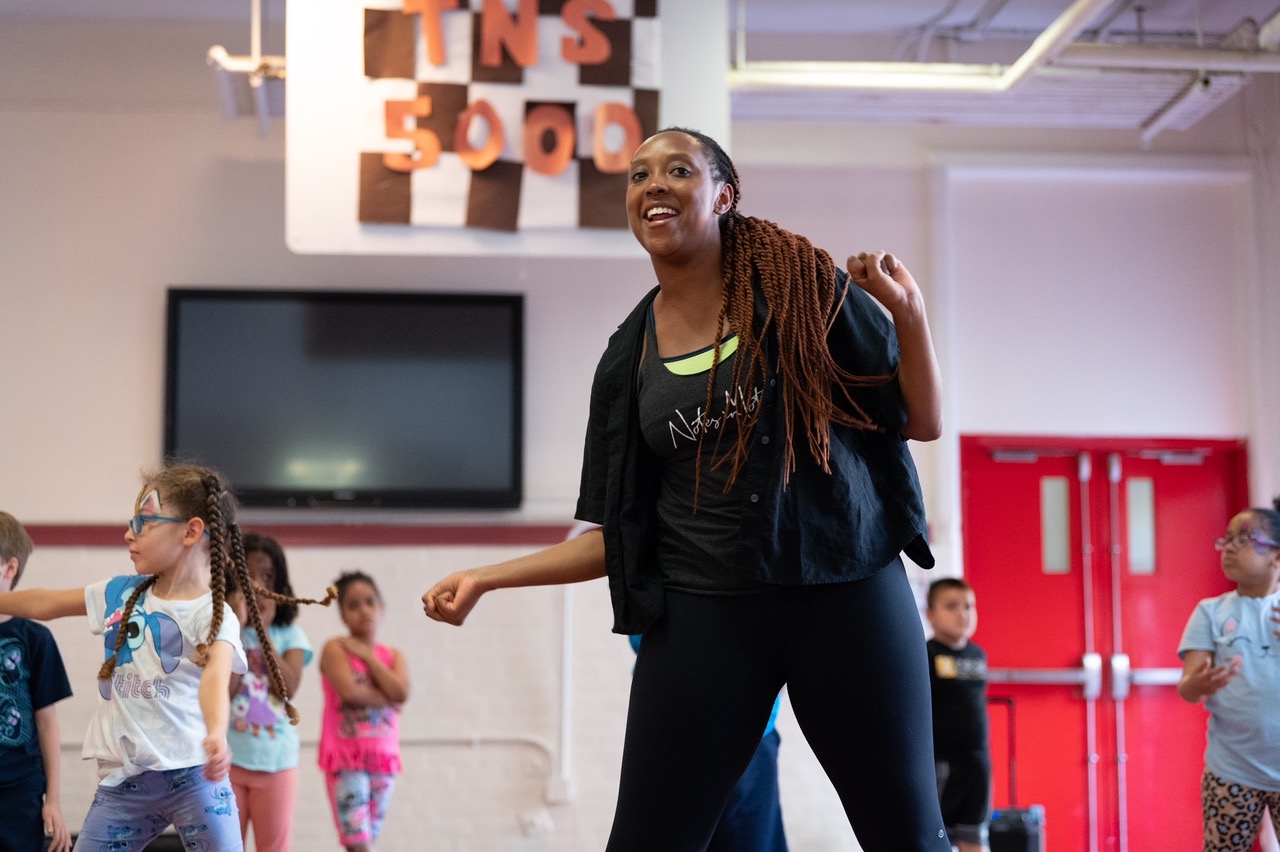
Dance teachers can sometimes be treated a bit like DJs. “People always want fresh music from you,” says teaching artist Bailey Randolph. She feels pressure to always keep an ear out for new songs—and she’s happy to oblige. Whether she’s watching TV, riding on the subway, or just walking down the street, the Shazam app (which can name songs just by listening to them) is always at the ready on her phone in case she hears something that might get her students pumped to dance.
Randolph even looks up tracks she doesn’t necessarily love herself because she knows that not all of her students will share her own preferences. “When I’m picking music for teaching, I try to not latch on to only the things that I like,” she says. “I try to be open to everything.”
More importantly, Randolph wants to make sure she’s branching out from her own culture to find tunes that reflect the genres she’s teaching. For instance, she’s recently been teaching Afrobeats classes in New York City public schools through choreographer Amanda Selwyn Dance Theatre/Notes in Motion, so she searches specifically for African artists to play. “I like highlighting African artists because then students want to go and look them up,” she explains. “I feel like that’s really important to lead students to be more inquisitive about artists.”
The music Randolph chooses for K–12 students is also somewhat different from what she’d play at a private dance studio. “When I used to teach at a studio, I would look for music that had rising and falling and different accents,” she says, adding that she’d look for tracks with layers that would help her teach the students how to “paint the music” with their bodies. But with public school students, she focuses more on getting them to accent the beat and move with their whole bodies, so she gravitates to upbeat songs with strong, clear musical dynamics.
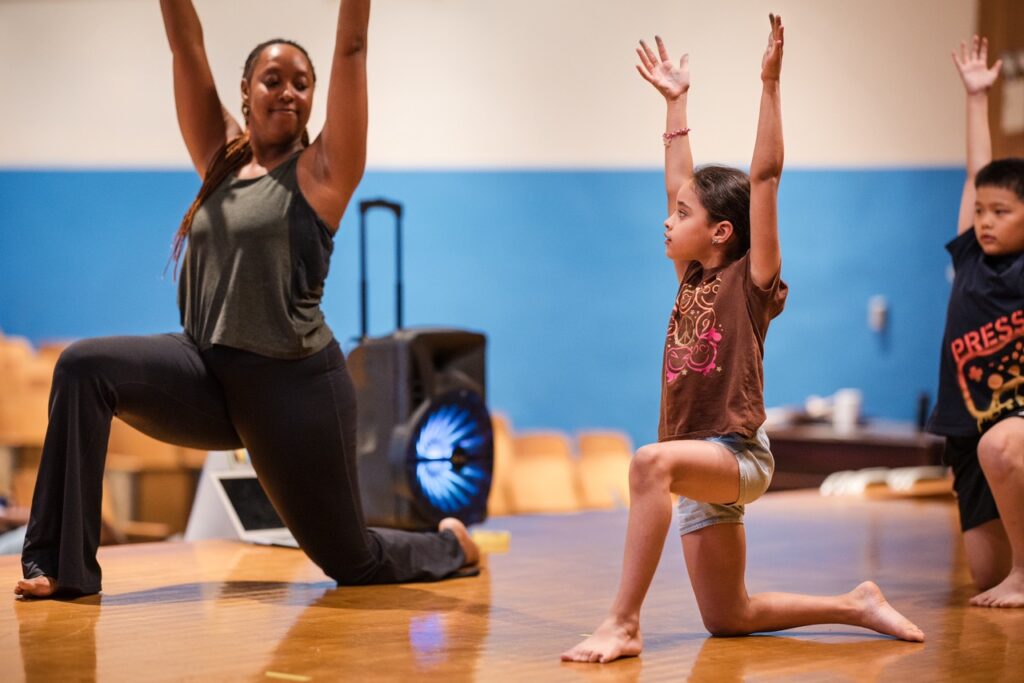
That doesn’t mean she ignores musicality, though. She might instruct her students to focus on one particular instrument at a time, or closely listen to a certain accent in the rhythm. “It really helps young students in kindergarten through fifth grade to latch on to something,” she explains. Other times, Randolph might have them clap out the rhythm, then put that rhythm into a particular body part, like the shoulders or rib cage. Or she’ll ask them to try to dance the “opposite” of the rhythm. “Usually I get running around or just shakes,” she admits, with a laugh.
Music isn’t only reserved for dancing in her classroom, though. If she sees students are getting overstimulated at any point, she’ll turn to a dedicated meditation playlist she’s made, and choose a song that will help the room calm down with a mid-class meditation moment. Other times, she’ll set a welcoming vibe before class with a popular, up-tempo song that the kids know in order to provide something familiar, so that dance class doesn’t feel intimidating.
And when it’s time to dance, she turns on something upbeat that makes her students want to move. “I always pick something that makes the kids feel energized,” she says. “This is their time to dance in school!”
Go-To Songs for Class
Here, Randolph shares some of her favorite tracks in a Spotify playlist she made specifically for DanceTeacher+. They span from soca songs for Afrobeats classes to rhythmic music she likes for contemporary. But all are kid-friendly, often largely instrumental, and any that do have lyrics focus on positive messages.
“Follow the Leader,” by The Hitters
“This is my best warm-up song for young kids because it has instructions in it, like hands up, down, and then move left to right. And I’ve incorporated isolations into that instead of just doing a march. I can acknowledge the popularity of the song, but also put in some core values of Afrobeats, which is emphasis on isolating a body part to a beat and dancing within your community.”
“Asew,” by Bisa Kdei and Mic Flammez
“There’s not a lot of lyrics to this song. It’s more instrumental, which is good for working in schools because sometimes there’s a lot of explicit lyrics or a message that you don’t want. I use this a lot for my Afrobeats classes; I like that it’s very clearly an African song. It’s got a consistent beat, but there are also notable breaks in the music—those are always good times to change up the choreography. And it’s always a big hit because the beat is just contagious and happy.”
“It Runs Through Me” and “Disco Yes,” by Tom Misch
“I love Tom Misch’s stuff because, first of all, there’s no curse words that I have to blur out. He also uses lovely rhythms. His music almost pulls on Afrobeat culture and Black culture the way that there’s a constant drum line through it. It’s bright, but also calm.”

